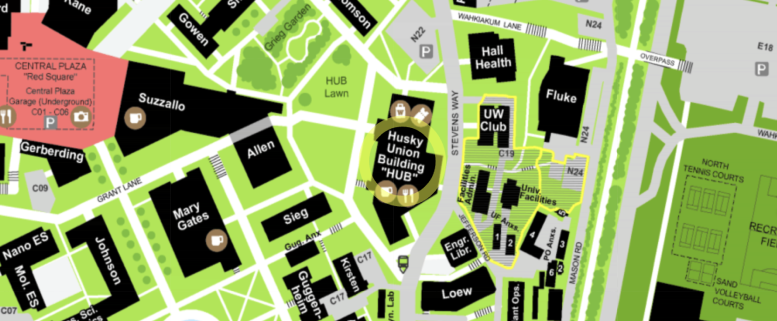Leica BOND RX Fully Automated Research Stainer for Shared Instrument Core
UW Department of Comparative Medicine
Requested:
$234,494
Status:
Funded
Awarded:
$234,494
Abstract
We are requesting funds to purchase a Leica BOND RX Stainer, both to replace an aging Leica BOND Max in our shared instrument core at UW Medicine in South Lake Union, and to provide new, cutting-edge opportunities for graduate and undergraduate researchers in medicine and cell biology. The Leica BOND series of stainers primarily utilize a biological assay called immunohistochemistry, abbreviated IHC, which allows researchers to visualize biochemical signals in cells within their structural context under a microscope. An example would be the ability to visualize the signal of actin, a common muscle protein, within the structure of a muscle cell by way of staining the tissue on a microscope slide. The physical stain is the result of antibody complexes detecting antigens within the tissue or cells; in the previous example, this would be antibody-actin complexes. This can give researchers critical understanding of where, when, and how proteins are being regulated in cellular or tissue microenvironments, which has an enormous scope of applications to contemporary research questions. The Leica BOND automates the staining step of this process, which ensures that the microscope slides are produced with consistent, reproducible, and efficient results. The BOND RX model is unique in that it expands on the capabilities of IHC by including other assays (detailed below in “Project Plan/Current State”). In total, eight new pre-programmed assays would become available to our shared instrument core by having this machine, with the potential to develop even more new assays utilizing the included Leica software. Our current Leica BOND Max stainer has been available at the Histology and Imaging Core (HIC) since 2009 for research projects. Since its inclusion into the program, we have helped graduates, undergraduates, and high school students, ranging in disciplines from materials science to infectious disease. Over the nine-year lifetime of this instrument, we conservatively estimate that over 100 graduate and undergraduate students have directly benefited from the use of this instrument. Additionally, we expect this number to continue to grow with the addition of a Leica BOND RX and its capability of innovative assays that can support an increased number of IHC projects. The broad applications of IHC and the availability of our instrument to research groups across UW campus have, however, taken a toll. The lifespan of the Leica BOND Max has been extended by careful maintenance, training, and use by our staff members, but even so, our current BOND has been susceptible to frequent and costly malfunctions in recent months, which prevents us from operating it efficiently to help as many student researchers as possible. The year before the HIC started purchasing the service contract for the BOND Max, we spent just over $20,000 in maintenance on the instrument. For example, a recurring issue is replacing the heating elements on the slide staining assembly (SSA) in the BOND Max. After 3 to 6 heating elements have gone out, Leica has to replace the entire SSA part, which costs $10,000 alone, plus labor and travel for the technician. Though our BOND Max is currently under a service contract, these critical repairs are happening more and more frequently, which limits the amount of time that we can run assays. Furthermore, the capabilities of our current BOND Max are severely limited in comparison to the BOND RX: we cannot provide opportunities to answer nuanced research questions with our current instrumentation. Immunohistochemistry is an industry standard for physically visualizing the spatial relationships between molecular signals in cells and tissues; thus, supporting access to IHC, and related techniques, is critical for a research institution like the University of Washington. Without shared instruments, the mere cost of immunohistochemistry and other highly-specialized instruments and assays would be simply out-of-reach for many groups and student researchers at UW. We know from our past nine years of experience with the Leica BOND Max that IHC answers meaningful research questions and provides young scientists with exposure to invaluable laboratory techniques.

